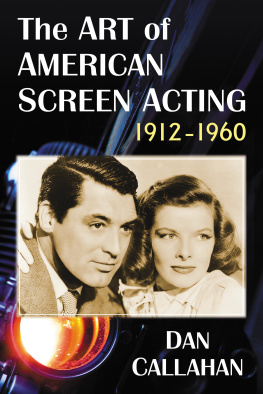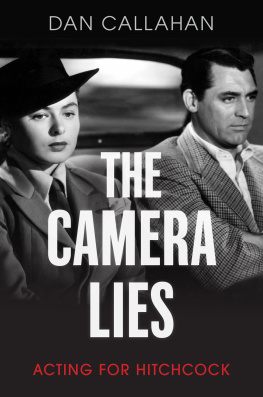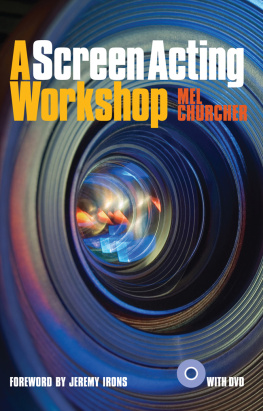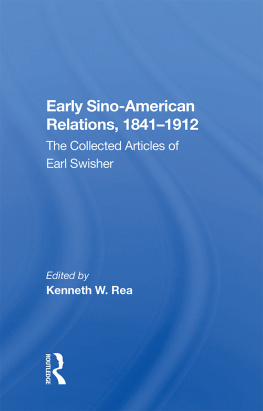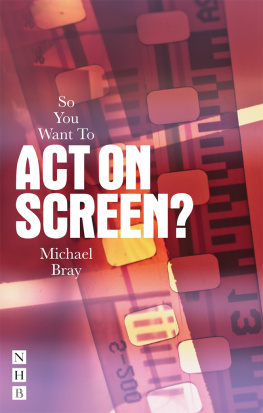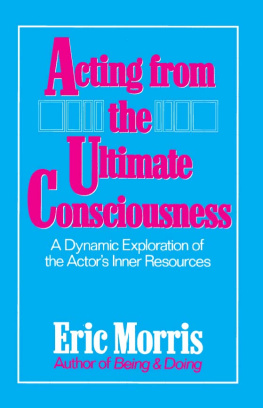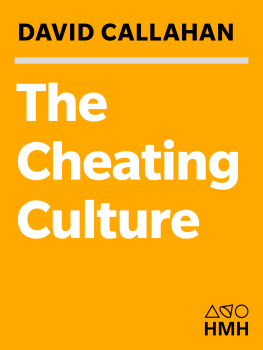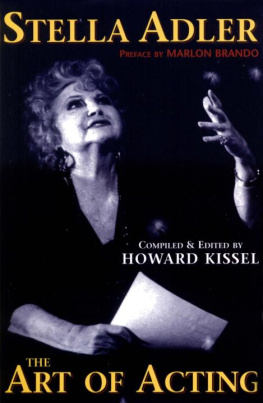Dan Callahan - The Art of American Screen Acting: 1912-1960
Here you can read online Dan Callahan - The Art of American Screen Acting: 1912-1960 full text of the book (entire story) in english for free. Download pdf and epub, get meaning, cover and reviews about this ebook. year: 2018, publisher: McFarland & Company, Inc., genre: Science. Description of the work, (preface) as well as reviews are available. Best literature library LitArk.com created for fans of good reading and offers a wide selection of genres:
Romance novel
Science fiction
Adventure
Detective
Science
History
Home and family
Prose
Art
Politics
Computer
Non-fiction
Religion
Business
Children
Humor
Choose a favorite category and find really read worthwhile books. Enjoy immersion in the world of imagination, feel the emotions of the characters or learn something new for yourself, make an fascinating discovery.
- Book:The Art of American Screen Acting: 1912-1960
- Author:
- Publisher:McFarland & Company, Inc.
- Genre:
- Year:2018
- Rating:4 / 5
- Favourites:Add to favourites
- Your mark:
- 80
- 1
- 2
- 3
- 4
- 5
The Art of American Screen Acting: 1912-1960: summary, description and annotation
We offer to read an annotation, description, summary or preface (depends on what the author of the book "The Art of American Screen Acting: 1912-1960" wrote himself). If you haven't found the necessary information about the book — write in the comments, we will try to find it.
The Art of American Screen Acting: 1912-1960 — read online for free the complete book (whole text) full work
Below is the text of the book, divided by pages. System saving the place of the last page read, allows you to conveniently read the book "The Art of American Screen Acting: 1912-1960" online for free, without having to search again every time where you left off. Put a bookmark, and you can go to the page where you finished reading at any time.
Font size:
Interval:
Bookmark:


McFarland & Company, Inc., Publishers
Jefferson, North Carolina
LIBRARY OF CONGRESS CATALOGUING DATA ARE AVAILABLE
BRITISH LIBRARY CATALOGUING DATA ARE AVAILABLE
e-ISBN: 978-1-4766-3252-0
2018 Dan Callahan. All rights reserved
No part of this book may be reproduced or transmitted in any form or by any means, electronic or mechanical, including photocopying or recording, or by any information storage and retrieval system, without permission in writing from the publisher.
Front cover: Cary Grant and Katharine Hepburn, 1938; background photograph by Hal Bergman (iStock)
McFarland & Company, Inc., Publishers
Box 611, Jefferson, North Carolina 28640
www.mcfarlandpub.com
For my sister Tracy
In the 50 years or so before Marlon Brando arrived on screen in The Men (1950) and A Streetcar Named Desire (1951), acting for film went through a variety of both convulsive and subtle changes, none more exciting than the early talkie period of the 1930s when actors like James Cagney, Bette Davis, Cary Grant, and Katharine Hepburn emerged. They didnt want realism. They wanted magic, and they tried to give that to people. They told what ought to be truth. These were the stars of classic Hollywood, the ones with the distinctive voices and manners, the ones who were imitated, dreamed of, and dreamed on.
They still insist on themselves all these years later in whatever way we can see and hear themin clips from their best work, in whole films that we can rewind or fast forward, in revival houses where they still do what they did to audiences of their time but slightly differently, as part of history rather than as part of a moment. They do travel, these so-called stars of old Hollywood. Look and listen to them for the first time, then look and listen to them for the hundredth time in the same film or films, and they are alive again, in a way, beckoning and complete, precisely because they are somewhat distant. They are not natural a lot of the time but more than natural. They are heightened, an ideal of themselves offered up to us (though with the flinty Davis, that ideal could also be turned to an instructive nightmare).
Actors still sometimes speak about some of these old Hollywood players as preBrando or dismissively refer to them as so preBrando. Occasionally there will be an article in a putatively reputable newspaper or magazine in which a writer attempts to encapsulate and dismiss these preBrando actors on strange and ignorant grounds having to do with perceived phoniness or posturing. These articles fall apart instantly when it becomes clear that the writer is basing this opinion on the viewing of a handful of classics on television or maybe not even full movies but scenes: a bit of Hepburn in The Philadelphia Story (1940) or Davis in The Letter (1940), taken out of context to show that nobody talks and moves like that. No, nobody did, though Hepburn came closest, most likely, to living up to the extremely unusual person she was trying to project.
Contemporary acting teachers have been known to wonder at these old Hollywood creatures, to discreetly put them down, to assert the dominance of Brando and the enshrinement of the Stanislavski Acting Method and all that came after that. Brando himself in the documentary Listen to Me Marlon (2015) contemptuously dismisses movie actors of the 1930s and 1940s as breakfast cereals, obvious in their gestures and always the same. And that kind of acting became absurd, Brando said. His point of view has become the dominant narrative about acting. It is deeply wrong, and it cannot be allowed to stand.
My hope in this book is to pay close enough attention to the major players from 1912 to 1960 or so to prove that what they were doing is both different from what the Method actors started doing in the 1950s and also similar, sometimes, at its core, and to also show that it is valid in its own quick, vital, often eccentric right. The artifice of some of their work is not a lie but a creation, and the best of these creations shine just as much light on human behavior as did the most doggedly naturalistic of the Method actors. In fact, they shed more light in certain ways. In some cases, the styles of the stars did also change over time (see particularly the way Davis adapted herself to the Method changeover, as detailed in the extensive piece on her to come).
When Jack Lemmon asked Rosalind Russell to define acting for him, she said, Acting is standing up naked and turning around very slowlyas solid a definition as any. Thats what Greta Garbo did, at her best, and she is the ultimate old Hollywood film star, letting us fill in the blanks. Always there is the lure and the hope that we will see something private, something that Grant, Hepburn, Cagney or Davis didnt necessarily want us to see but is there if you keep looking and looking hard. I hope I have found some of these moments, and I hope they encourage you to do your own search for the times when these players are exposed in all their idiosyncrasy and glory, moving between their public and private selves.
Garbo is slow, as is Lillian Gish in her close-ups, whereas Grant, Hepburn, Cagney, and Davis are fastas fast as Grant taking a pratfall when Hepburn drops her olive on the floor in Bringing Up Baby (1938). The movement of this book follows the slowness of Gish, Garbo and the silent era players, giving way to the speed of Cagney and Davis and then halting for the very different, labored-over slowness of Brando and Kim Stanley and their Method ilk of the 1950s.
The famed French stage star Sarah Bernhardt was one of the first name actors to be filmed. In 1900, she played Hamlet dueling Laertes in a two-minute movie. In 1908, Bernhardt did a 12-minute Tosca that so offended her she insisted the film be burned. With no sound and the camera so far away, Bernhardt felt that her work was not being represented accurately. She was happier with Queen Elizabeth (1912), a nearly hour-long film for producer Adolph Zukor, but that movie shows a kind of showboating, rag-doll woman constantly throwing her arms about for no reason. Its all arms, this performance. It does not add to Bernhardts legend but diminishes it. Her powdered face and black currant eyes make no impact. Monsieur, you have put me in pickle forever! Bernhardt supposedly told Zukor, but that is not quite the case, unfortunately.
By comparison, Bernhardts closest rival, the Italian actress Eleonora Duse, made one film in 1916 called Cenere (Ashes), a tale of mother love. She was unhappy with it, lamenting that movies needed a whole new approach she didnt have time to learn, but her work in Cenere is still outstanding, everything it was supposed to have been on stage: liquid, soulful, slow, and penetrating.
For the first 10 minutes of Cenere, Duse acts with her head fully covered, making fluid gestures to express her deep love for her son. When she is finally unveiled, we see an old woman with white hair (she was only 58 at the time). Febo Mari, the actor playing her son, makes fussy gestures with his hands, and his poor playing only throws the high quality of Duses work into relief. She can express more with the back of her head for a moment here in silence and black and white than most actresses can from the front for two hours with color and sound. Her concentration is transfixing, and thats what all fine acting is based onconcentration. But Duse felt that an even deeper kind of concentration was needed for the camera. It would have to do, for a time, without voice and without words. This new concentration would be pioneered by Lillian Gish.
Next pageFont size:
Interval:
Bookmark:
Similar books «The Art of American Screen Acting: 1912-1960»
Look at similar books to The Art of American Screen Acting: 1912-1960. We have selected literature similar in name and meaning in the hope of providing readers with more options to find new, interesting, not yet read works.
Discussion, reviews of the book The Art of American Screen Acting: 1912-1960 and just readers' own opinions. Leave your comments, write what you think about the work, its meaning or the main characters. Specify what exactly you liked and what you didn't like, and why you think so.

